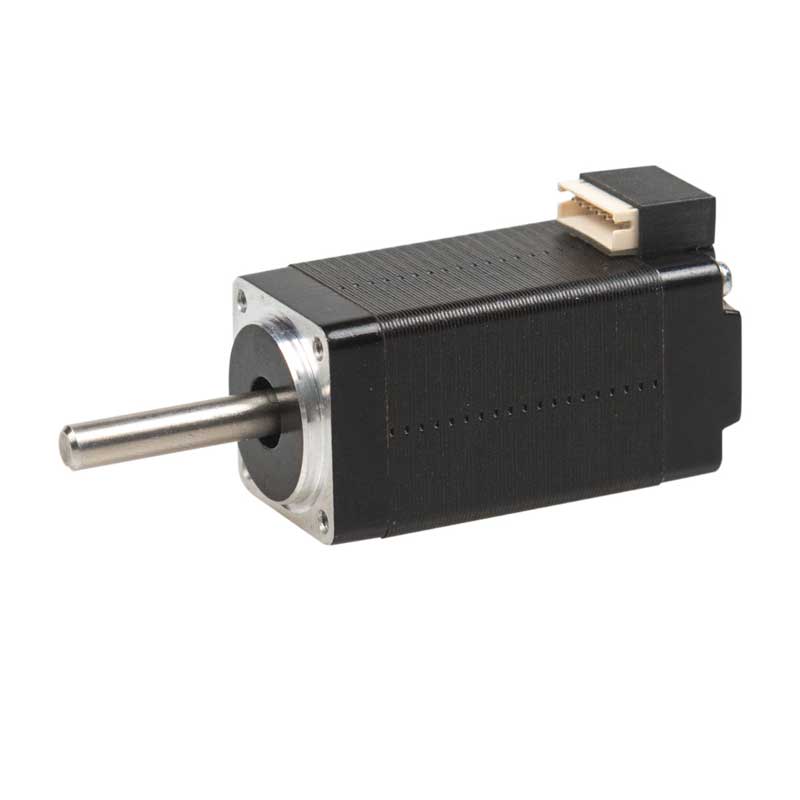Hybrid Stepper Motor improvements improve medical pump performance
 Mar 02, 2023|
Mar 02, 2023| View:110
View:110With the low cost of motion control, designers of medical pumps often have to face the challenge of implementing precision. There are often three options for implementing such electronic motion control:permanent magnet brushed DC motors, brushless DC motors, or stepper motors. The stepper motor belongs to the hybrid stepper is an excellent choice.

1. Hybrid Stepper Motor structure.
The operation of any motor can be considered as the interaction between its stator and rotor. In a Hybrid Stepper Motor, the current slots in the coils around each stator produce electromagnetic poles in the stator. The serrated teeth in the rotor also have permanent, where the magnet ring is used for reinforcement, with the serrated teeth in the stator. This alignment of forces occurs to produce torque (or rotational torque) on the rotor shaft. Using the switching electronics, the next coil is energized and the rotor moves (in steps) to align itself again with the magnetic new position of the poles in the stator. When the coils are energized in sequence, a smooth rotational motion is achieved. If the torque is higher, then the stator must be strengthened with poles (more coils, more current or larger diameter) or the rotor with poles to be strengthened (stronger magnets or larger diameter rotor).
2. Improvement of Hybrid Stepper Motor.
Today's design engineers are given the ability to Hybrid Stepper Motor line. Engineers are maintaining or reducing the overall size of the pump, or even improving performance. Mechanical design will affect the overall pump package size, allowing a wider choice of motors. Advances in hybrid stepper design allow design engineers to reduce package size while even increasing pump performance.
3. Maintain torque.
In order to reduce the overall package size of the pump, engineers can overdrive the Hybrid Stepper Motor to increase the output torque of the motor. While this can be done as long as the duty cycle is considered, it brings up the temperature rise of the motor, both in terms of heat generated as well as torque drop temperature rise. The addition of an aluminum housing with a closed stator laminate improves both of these issues. While typical Hybrid Stepper Motors can only dissipate heat through aluminum end bells, designers today provide a duct to run along the entire length of the stepper, making it more efficient and thus allowing for less torque loss due to temperature rise. This combination allows engineers to increase the duty cycle of the pump, permitting a more effective dose to the patient. By generating less heat during operation, the pump stays cooler to the touch when the patient or nurse needs to adjust the medication.
4. Larger capture bearings
Hospital pumps located next to patient beds need to be quiet during operation so as not to disturb patients while they rest. Therefore, the audible noise of the motor is a key design consideration for engineers. Noise from Hybrid Stepper Motors can be generated by the bearings; any slight bearing movement at operating speed will produce audible noise. Capturing the front and rear bearings will significantly reduce the noise generated by the motor.
5. Torque Linearity
Pump dosing requirements may vary, depending on the fluid or drug being dispensed. In many applications, the fluid volume may be very small, which requires a miniature Hybrid Stepper Motor. Typical Hybrid Stepper Motors are indexed and stacked, with four end bells secured between two end bells by screws. The use of an aluminum housing better aligns the lamination in the manufacturing process, creating more uniform air gap between the stator and rotor teeth. The miniature Hybrid Stepper Motor creates better torque linearity thus providing the best performance motor capability.
6. Enhanced magnetic components
Another key requirement for any pump application is the pull-out torque. Since a Hybrid Stepper Motor has a defined amount of torque that it can produce under certain drive conditions, this will dictate the size of the motor required for the application. Therefore, the increase in motor torque will correspondingly reduce the overall pump size. This magnetic design plays a significant role in the Hybrid Stepper Motor and acts on the torque generated by the motor, as well as the two magnets providing greater flexibility for the design engineer.
7. Holding torque
Often, the design engineer will specify a standard for a Hybrid Stepper Motor to ensure it meets the requirements. Multiple iterations of the motor are common, as the mechanical design will change over the course of the project. Advances in Hybrid Stepper Motor design have shortened this design cycle because the motor has been optimized for operational performance. Changes in motor requirements have less impact on the motor, especially since the torque of the motor can be increased by up to 30% for the same size.
This is how improvements to the Hybrid Stepper Motor have improved the performance of medical pumps. If you need more detailed information, welcome to contact us!































